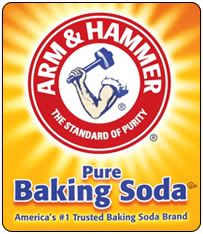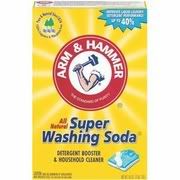how do i increase my alkalinity?
whats your current method of maintaining alk and calcium?
i like reef builder… sea chem powder.
many of the times if your alk is low your calcium is too, not the rule but its almost normal, so the question is is your calcium low?
if that is the case then you should consider a lime water drip or B-ionic.
i like b-ionic 2 part as a daily maintainance but if you need to adjust alk you add more than the calc additive, but then you run out of one faster than the other.
tim see my numbers in that so called diatom bloom thread
alk 6 calcium 450
sorry… i thought he asked how to raise alk. my bag
[quote=“fishguy9, post:6, topic:2211”]
sorry… i thought he asked how to raise alk. my bag[/quote]
whats this suppsed to mean?
he did ask about alk, but normaly alk and calc are hand in hand, if calc is 400 alk is 8dkh, if calc is 450 than dkh is 10 its NOT the rule, but often its the ratios.
however if they are severly apart then there is cause for concern, the first thing i’d do is test again. most of the time if you have an ionic imballance its the calc that is lower because imballanced ions tend to precipitate the calcium causing a lower level in calc and mag. so the question is why would you read lower alk and high calcium, well i’d first doubt the test but if it was accurate i’d do a few water changes and test the water before you add it to the system, just sounds off to be that far, 6 dkh is about .69 meq/l and if your tank isnt in teh middle of a major crash due to that than its the test, if it is all dying then i’d do something drastic like a water change and additives
I thought it was calc goes down, Alk goes up… thus you wanna find a balance of them both in the middle… well actually i know thats what it is. If you drive you calcium up your alkalinity will fall, causing precipitations to occur. which will be some form of calcium carbonate.
Heres what i read about…
If both are high, just let the tank go and it will correct itself
If both are lower, add things such as kalkwasser, calcium/Co2 reactor, or 2 part supplements…(caused by growth of coralline and corals)
To high calc, water changes
too low, add umm… i wanna say calc carbonate or chloride i forget which… caused by excessive buffer use…
i read about all this a little bit ago ill find it and post link
FOUND IT_
http://www.advancedaquarist.com/issues/nov2002/chem.htm
my info was alittle skewed but you can read for yourself…
all i want to know is
do i use baking soda or powder.
i know the run down and appreciate the help but this is all the info i need
Soda, sorry i didnt know …
[quote=“bz350, post:9, topic:2211”]
all i want to know is
do i use baking soda or powder.
i know the run down and appreciate the help but this is all the info i need[/quote]
lol… kinda what i said right??
Baking soda is what you want and you can use this to tell you exactly how much to add 'Reef Chemistry Calculator FV'
the holy trinity. what a headache
i could write for days on calc, alk and mag.
brett, i would suggest getting a two part solution instead of using baking soda. you could make your own, but its hard to tell the strength of baking soda as it may differ between batches, thats why two-parts are good, since you know what dose increases the parameter.
the thing about making your own 2 part additives is that the recipie that is fairly known uses DOW flakes for the calcium, but you shouldnt use any of it made after 2007 because they stopped fine filtering it, i think it was bromide or something they stopped filtering out i forget now…
as of 2007 DOW has announced that the Bromide in all their CaCl2 will go from its normal ~150 ppm to 8,000 ppm. And Bromide levels in salt mixes now are already at 200-600 ppm Bromide. NSW is 65 ppm.
I use a mix of half BAKING SODA from Pathmart found in the Baking section:

and Half Arm and Hammer WASHING SODA also at Pathmart found in the laundry section:

the baking soda is sodium BI-carbonate, which provides carbonate alkalinity and mild PH boost. while the Washing soda is pure sodium Carbonate, which also provides carbonate alkalinity with a higher PH boost. most buffers are a mix of these two and perhaps some other minor carbonate compounds. but these two do the work. a 50/50 mix seems to work fine for me.
Be careful of what you buy in the laundry section. Do not buy anything thats called detergent, perhaps with baking soda added. it will make your tank foam up and all your corals and fish will float away dead.
If you bake baking soda in a 350-400 degree oven for 30-40 minutes it drives off the water and makes it sodium carbonate or washing soda. so all you really need is baking soda to start. and make both carbonate forms.
a form of Randy’s recipe.
http://reefkeeping.com/issues/2006-02/rhf/index.php
Hmmm. I wonder if my old bag of C-FORCE calcium chloride comes from DOW stock salts? Im about to start a new 50 pound bag, but i bought it a couple years ago.
The bromide issue with Dow is really a non-issue. When Dow would refine CaCl2 in the past one of the impurities they would remove was bromide. They would then refine the bromide and sell that also. They stopped selling bromide so now they dont bother to remove the small amount that was and now still is present in CaCl2.
If you read some of RHF’s older posts on this you will see where he originally said that Dow may not be safe to use anymore and then a little while later after he looked at the new MSDS of the product he said that its not an issue with regular water changes. The amount of bromide left behind is pretty small.
Home made two (three) part solutions are an excellent choice. We can buy the exact same products from the supermarket or chemical supply place that you can buy at the LFS. The only difference is packaging and price.
The next time someone buys super buffer dkh or even ph buffer pour some in a bowl and then pour some baking soda in another bowl and tell me the difference. Do the same with turbo calcium and peladow or seachem mag and Epsom salt.
These supply company’s arent using any special chemicals. They are using the same off the shelf stuff we can get.
Heres another example. 5g bucket of salt is about $40. Do a little leg work and you can make the same thing for $6
i would just go BRS. 13.99 for a dry gallon which makes 8 gallons at a known strength.
with DOW flake, how would u figure the strength/molarity of the solution. I know if you mix x ammt of chemical and y amt of water then strength is z. but is the calcium always the same purity?
well, if you follow the Randy Recipe, it gives you a pretty standard sollution which you can then plug into the dose calculator. making a gallon at a time with the prescribed cupfulls of CaCl or the buffer getts you close enough for gubmint work at being repeatable. and you can always test before and after a dose. as your calculation for your actual system water volume will probably be incorrect. so a calculated dose may be too much or too little to hit your desired numbers. Sometimes i make the solution half strength, just use twice as much.
Randy did some debating on the concern over the bromide increase in the Peladow pellets. I think his opinion in the end was it probably does no harm. for one thing, regular water changes keep it under control. and the other is that bromine is not used in any way by corals or inverts, so change of concentration probably wont affect anything. and third, what if the salt companies use the same high bromide CaCl from dow to make their salt mix?
Hmmm?
Oh, Hey Chris, do you happen to have a recipe for a DIY salt mix? Most things are easy and cheap to buy bulk like sodium carbonate, sodium bicarbonate, sodium chloride, potassium chloride, calcium chloride, magnesium chloride, magnesium sulfate, sodium tetraborate, a bottle of Tropic Marin Trace elements, and a pinch of strontium chloride and and dash of potassium Iodide to taste. and i think you got a salt mix.
Hmmmm?? I sense an experiment coming on.
[quote=“kaptken, post:19, topic:2211”]
Hmmmm?? I sense an experiment coming on. [/quote]
Experimen away ;D